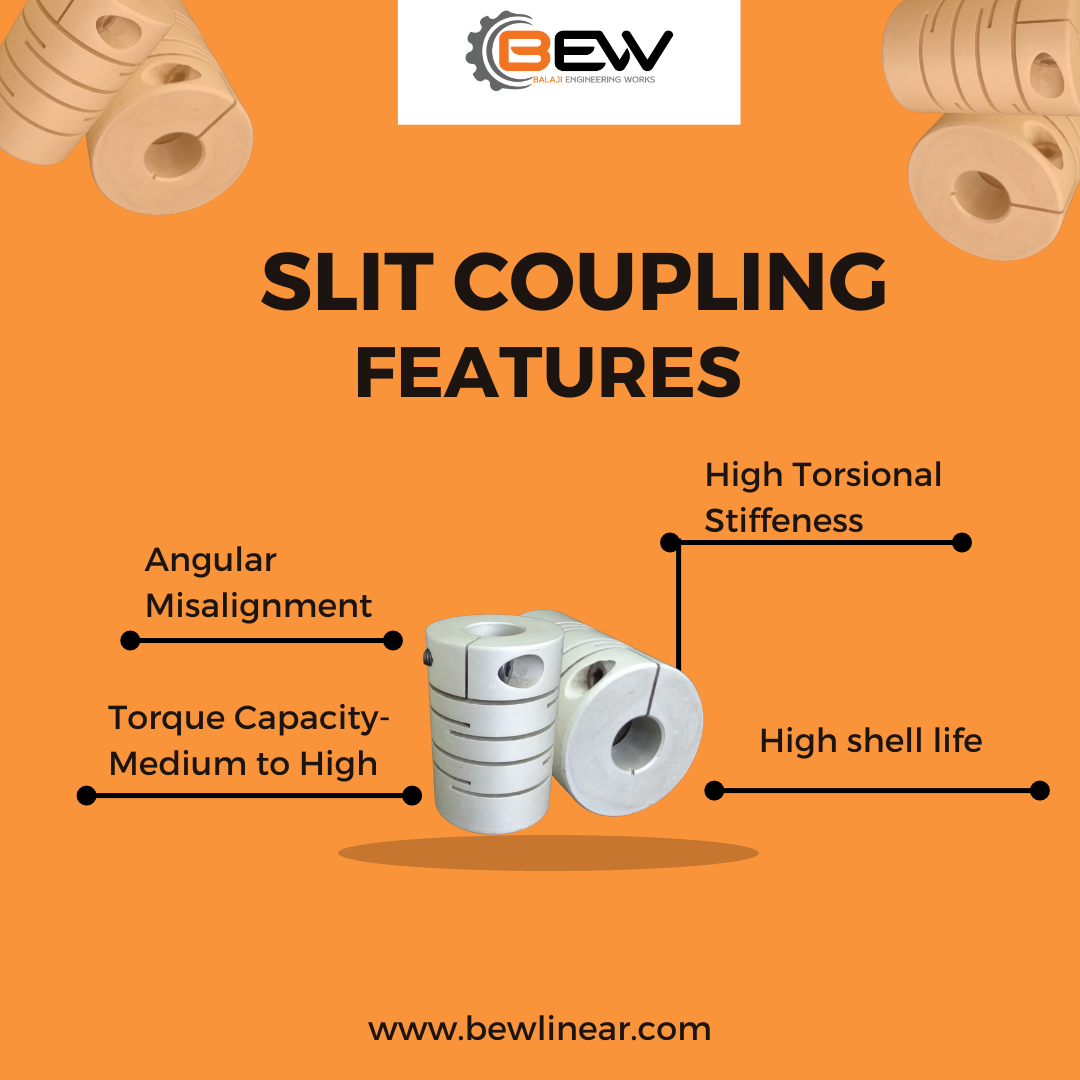What is a Slit Coupling?
A slit-type coupling is a mechanical device used to connect two shafts to transmit torque and rotation from one to the other. It is a type of flexible coupling that can accommodate small amounts of misalignment between the shafts while still maintaining an efficient transmission of power. Slit Coupling compensates for the following types of misalignment: Angular misalignment.
How does a Slit Coupling work?
The slit-type coupling consists of two halves, each with a series of radial slits cut into them. The slits are arranged in such a way that they interlock with the corresponding slits on the other half when the two halves are brought together. This interlocking design allows for a flexible connection between the two shafts, while still maintaining a secure grip on both shafts.
Benefits of Slit Couplings
One of the key benefits of slit-type coupling is its ability to compensate for misalignment between the two shafts. Because the slits can flex slightly, the coupling can accommodate small amounts of angular and radial misalignment without placing undue stress on either shaft. This makes it a useful choice for applications where the shafts may be subject to vibration or where alignment may be difficult to achieve.
Another advantage of the slit type coupling is its simplicity. Unlike other types of couplings that may require lubrication or maintenance, slit-type coupling is relatively maintenance-free. It is also easy to install and remove, making it a popular choice for applications where frequent shaft disconnection is necessary.
In terms of specifications, slit-type flexible couplings are available in industry standard sizes, with diameters ranging from 8 to 30mm. They can control angular misalignment up to 2 degrees and parallel misalignment from 0.15 to 0.20mm (0.005 to 0.007 inches).
Limitations of Slit Couplings
However, there are some limitations to the slit type coupling. One of the most, significant is its inability to accommodate large amounts of misalignment. If the shafts are significantly out of alignment, the coupling may fail to transmit power efficiently or may even cause damage to the shafts themselves. Additionally, because the coupling relies on a tight fit between the slits in each half, it may not be suitable for applications where there is a significant difference in diameter between the two shafts.
Conclusion
In summary, slit-type coupling is a flexible and reliable mechanical device for transmitting torque and rotation between two shafts. Its ability to accommodate small amounts of misalignment and its simplicity makes it a popular choice for many applications. However, it is important to be aware of its limitations and to choose the appropriate coupling for the specific requirements of each application.
Key considerations when selecting an aluminum flexible coupling:
Torque capacity: Ensure the coupling can handle the maximum torque of the application.
Misalignment accommodation: Choose a coupling that can accommodate the expected misalignment.
Speed rating: Select a coupling rated for the application’s operating speed.
Bore size: Match the coupling’s bore size to the shaft sizes it will connect.
Operating environment: Ensure the coupling’s material and finish suit the operating conditions.
Cost: Balance budget considerations with the application’s requirements.
Material of construction: Aluminum or stainless steel should be compatible with the operating environment and loads.
Contact Balaji Engineering Works or Consult a qualified engineer for assistance in selecting the appropriate coupling for your specific application.
At Balaji Engineering Works, we specialize in manufacturing and supplying aluminum slit-type flexible couplings as part of our linear motion equipment clamping solutions. Our couplings are designed to compensate for axial, radial, and angular misalignments, and they are simple and easy to assemble. They offer high-torsional stiffness and response, and their one-piece construction ensures zero backlash and low reaction force.


